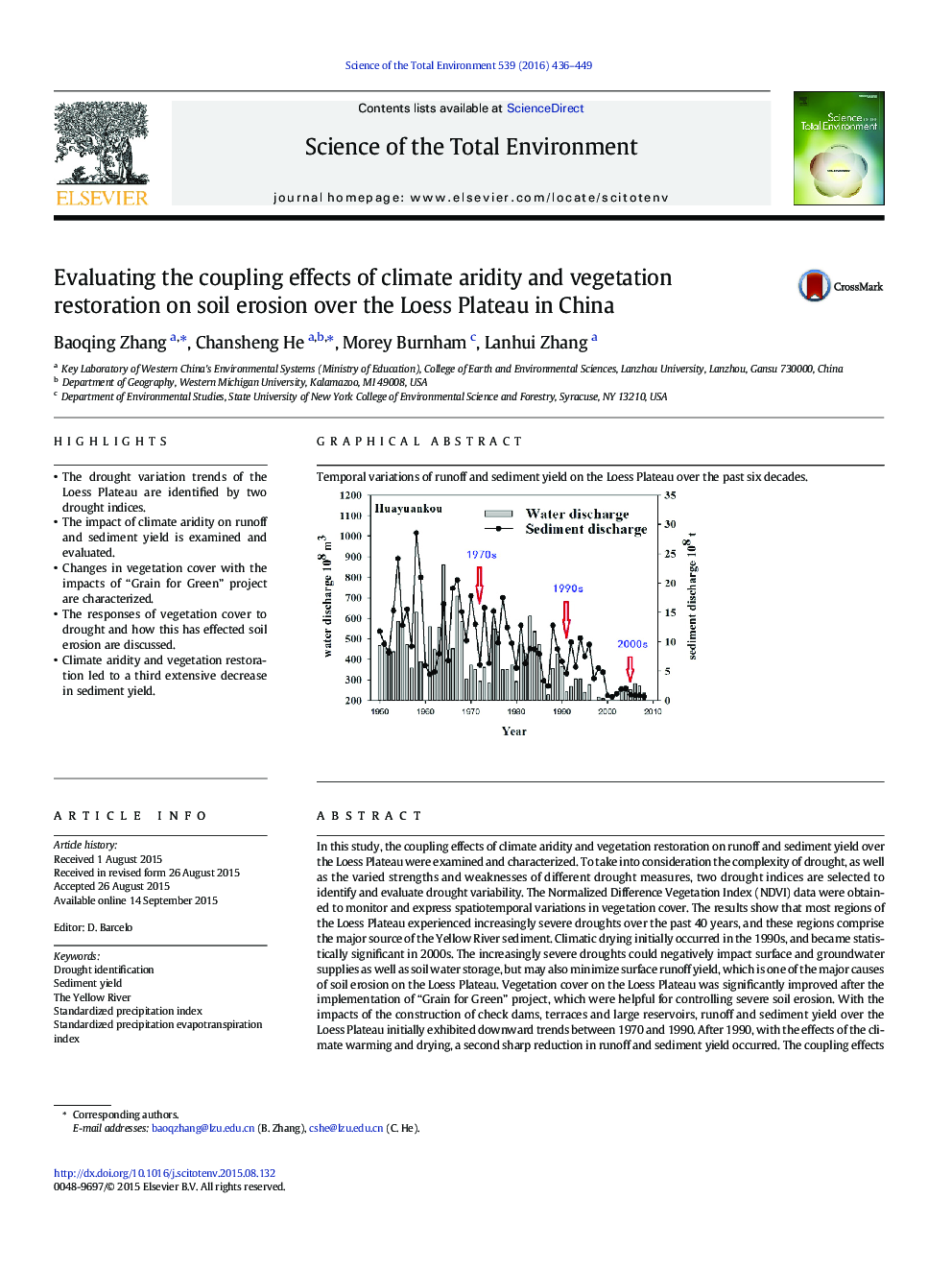| کد مقاله | کد نشریه | سال انتشار | مقاله انگلیسی | نسخه تمام متن |
|---|---|---|---|---|
| 6325087 | 1619745 | 2016 | 14 صفحه PDF | دانلود رایگان |
- The drought variation trends of the Loess Plateau are identified by two drought indices.
- The impact of climate aridity on runoff and sediment yield is examined and evaluated.
- Changes in vegetation cover with the impacts of “Grain for Green” project are characterized.
- The responses of vegetation cover to drought and how this has effected soil erosion are discussed.
- Climate aridity and vegetation restoration led to a third extensive decrease in sediment yield.
In this study, the coupling effects of climate aridity and vegetation restoration on runoff and sediment yield over the Loess Plateau were examined and characterized. To take into consideration the complexity of drought, as well as the varied strengths and weaknesses of different drought measures, two drought indices are selected to identify and evaluate drought variability. The Normalized Difference Vegetation Index (NDVI) data were obtained to monitor and express spatiotemporal variations in vegetation cover. The results show that most regions of the Loess Plateau experienced increasingly severe droughts over the past 40Â years, and these regions comprise the major source of the Yellow River sediment. Climatic drying initially occurred in the 1990s, and became statistically significant in 2000s. The increasingly severe droughts could negatively impact surface and groundwater supplies as well as soil water storage, but may also minimize surface runoff yield, which is one of the major causes of soil erosion on the Loess Plateau. Vegetation cover on the Loess Plateau was significantly improved after the implementation of “Grain for Green” project, which were helpful for controlling severe soil erosion. With the impacts of the construction of check dams, terraces and large reservoirs, runoff and sediment yield over the Loess Plateau initially exhibited downward trends between 1970 and 1990. After 1990, with the effects of the climate warming and drying, a second sharp reduction in runoff and sediment yield occurred. The coupling effects of climate aridity and vegetation restoration have led to a third significant decrease in runoff and sediment yield over the Loess Plateau after 2000.
Temporal variations of runoff and sediment yield on the Loess Plateau over the past six decades.177
Journal: Science of The Total Environment - Volume 539, 1 January 2016, Pages 436-449
